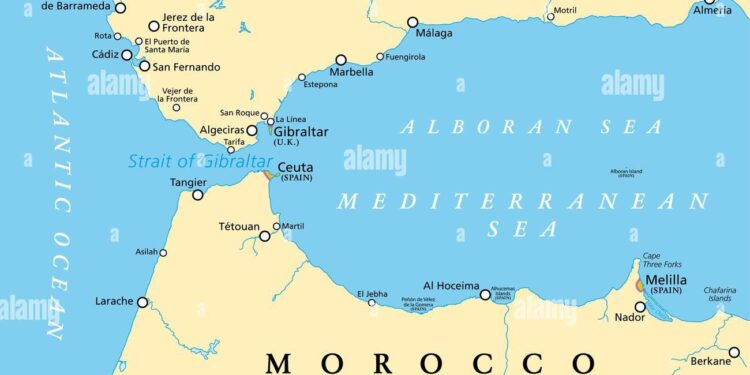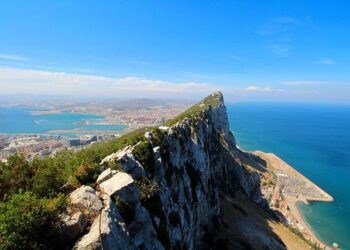The idea of constructing a bridge spanning the Strait of Gibraltar-linking Spain in Europe with Morocco in Africa-has long captured the imagination of engineers, policymakers, and investors alike. Situated at one of the world’s busiest maritime corridors, this ambitious project promises to transform trade, travel, and regional connectivity. Yet, despite the potential benefits, bridging the narrow but tumultuous strait has proven to be one of the most formidable infrastructural challenges of our time. From complex geological conditions and seismic risks to political intricacies and environmental concerns, the factors complicating the realization of this iconic link are as vast and varied as the waters it would cross. This article explores the multifaceted obstacles standing in the way of the much-debated Strait of Gibraltar bridge, shedding light on why such a landmark endeavor remains elusive.
Geographical and Environmental Hurdles Facing Strait of Gibraltar Bridge Construction
The natural layout of the Strait of Gibraltar presents formidable obstacles to any infrastructural endeavor aiming to connect Europe and Africa. This narrow waterway, at its narrowest point measuring roughly 14 kilometers, is characterized by deep waters plunging to nearly 900 meters, making traditional bridge foundations exceptionally complex and costly. The area is also known for powerful underwater currents, creating an unstable environment that demands cutting-edge engineering solutions and materials resilient to constant tidal forces and corrosive saline conditions.
Environmental concerns further complicate project feasibility. The strait is a vital migratory path for marine life, including whales and dolphins, whose habitats could be disrupted by construction and subsequent traffic. Additionally, the region falls within a seismic zone, meaning any design must take earthquake resilience into account. Key challenges can be summarized as:
- Extreme water depths requiring unprecedented foundation techniques
- Strong, unpredictable currents jeopardizing structural stability
- Seismic activity risks demanding robust, flexible engineering
- Ecological sensitivity to protect endangered marine species
| Factor | Impact |
|---|---|
| Water Depth | Up to 900 meters, hindering pile foundations |
| Currents | Strong lateral and vertical flows affect stability |
| Seismicity | Moderate earthquakes require flexible design |
| Marine Ecosystem | Critical habitat for migratory whales and dolphins |
Engineering Complexities and Technological Innovations Required for the Project
The Strait of Gibraltar presents a series of formidable engineering challenges largely due to its unique geographical and environmental conditions. Spanning approximately 14 kilometers at its narrowest point, the strait is one of the busiest maritime passages worldwide, necessitating construction that must minimize disruptions to shipping lanes. The area’s depth varies dramatically, reaching depths exceeding 900 meters, which complicates traditional bridge-building methods. Additionally, the region is seismically active, requiring advanced structural solutions to withstand potential earthquakes and strong underwater currents. To overcome these hurdles, engineers must integrate cutting-edge technologies, including deep-water foundation techniques, smart monitoring systems, and innovative materials capable of enduring harsh marine environments.
Among the technological innovations being considered are underwater tunnel boring machines (TBMs) that can operate at unprecedented depths, and adaptive vibration dampening systems which enhance resilience against seismic activity. The project also demands a multifaceted approach involving:
- High-strength, corrosion-resistant materials tailored for saltwater exposure
- Real-time structural health monitoring through embedded sensors
- Intelligent traffic management to ensure safe navigation below and above the crossing
- Environmental impact mitigation technology to preserve marine biodiversity
| Technological Component | Purpose | Key Feature |
|---|---|---|
| Deep-Water TBMs | Excavation beneath seabed | Pressure-resistant cutting heads |
| Vibration Dampening Systems | Seismic shock absorption | Adaptive response mechanisms |
| Sensor Networks | Structural health Monitoring | Real-time data transmission |
| Smart Traffic Management | Safe navigation coordination | AI-powered traffic control |
| Environmental Mitigation Technology | Marine biodiversity preservation | Impact monitoring and adaptive measures |
Strategic Recommendations for Overcoming Political and Economic Obstacles
Addressing the complex political and economic landscape involved in connecting Spain and Morocco via the Strait requires careful navigation of sovereignty concerns and economic disparities. A critical step lies in fostering bilateral trust through transparent diplomatic channels, ensuring that both nations perceive the project as equally beneficial. This can be achieved by establishing a joint oversight committee empowered with decision-making capabilities, emphasizing equitable distribution of financial burdens and infrastructural benefits.
Economic integration strategies must also prioritize inclusive development across both sides of the Strait. Key recommendations include:
- Creating shared economic zones that leverage complementary industries, such as logistics and tourism.
- Implementing phased investment plans to minimize fiscal shocks and allow adaptation to economic fluctuations.
- Engaging international financial institutions to diversify funding sources and foster global confidence.
| Obstacle | Recommended Approach |
|---|---|
| Political Sovereignty Issues | Establish joint governance and transparent legal frameworks |
| Economic Imbalances | Phased investment & shared economic zones |
| Funding Uncertainty | Engage international partners & diversify funding |
Wrapping Up
Bridging the Strait of Gibraltar remains a formidable engineering and geopolitical challenge, shaped by complex natural conditions and the delicate relationship between Spain and Morocco. While the vision of a physical link connecting two continents captures the imagination, significant hurdles-from deep waters and seismic activity to political and environmental concerns-continue to stall progress. As discussions persist, the Strait stands as a powerful reminder of the intricate balance between ambition, geography, and diplomacy in one of the world’s most strategically important waterways.
















